I tested the Samsung S95F and LG G5 OLED TVs side-by-side: here's which one you should get
Which TV giant comes out on top in this OLED showdown?

The Samsung S95F is a phenomenal OLED TV that delivers stunning picture quality, high brightness and rich contrast. Its anti-glare, reflection-beating screen make it possible to watch OLED in any room. It's packed with smart and gaming features, has a slick, premium design and delivers solid built-in sound. It isn't the cheapest of TVs, but this is the definition of premium TV.
Pros
- Excellent brightness and color
- Effective matte anti-glare screen
- One Connect box is a great addition
Cons
- Some minor black crush in places
- SDR brightness weaker than LG
- No Dolby Vision support
The LG G5 is a tour-de-force in the TV world. Its new four-stack OLED panel deliver spectacular colors, refined contrast and realistic textures. It's got a full suite of gaming features, a premium design and delivers punchy sound quality. The G5 does come at a high price but with what it can do, it's worth it.
Pros
- Exceptional brightness and color
- Excellent black tones even in brighter light
- Improved anti-reflection screen
Cons
- Still more prone to glare than the Samsung
- No HDR10+ support
- New remote lacks input select button
LG and Samsung's TV are among the most popular every year and recently, their OLEDs have been locked in an on-going battle to see which brand can reign supreme.
Both brands' flagship OLEDs have exchanged places on our best TVs lists numerous times, and have even battled for the title of TV of the Year at our awards, with LG winning in 2022 and Samsung winning in 2023 and 2024. So naturally, it's always a hotly anticipated contest.
Both the Samsung S95F and LG G5 are among the very best OLED TVs of 2025, but which one comes out the victor if you're looking to buy one? We've give both of these these TVs five-star scores, and I've put them against one another side-by-side to see who wins the flagship OLED battle between Samsung and LG.
Samsung S95F vs LG G5: price & availability
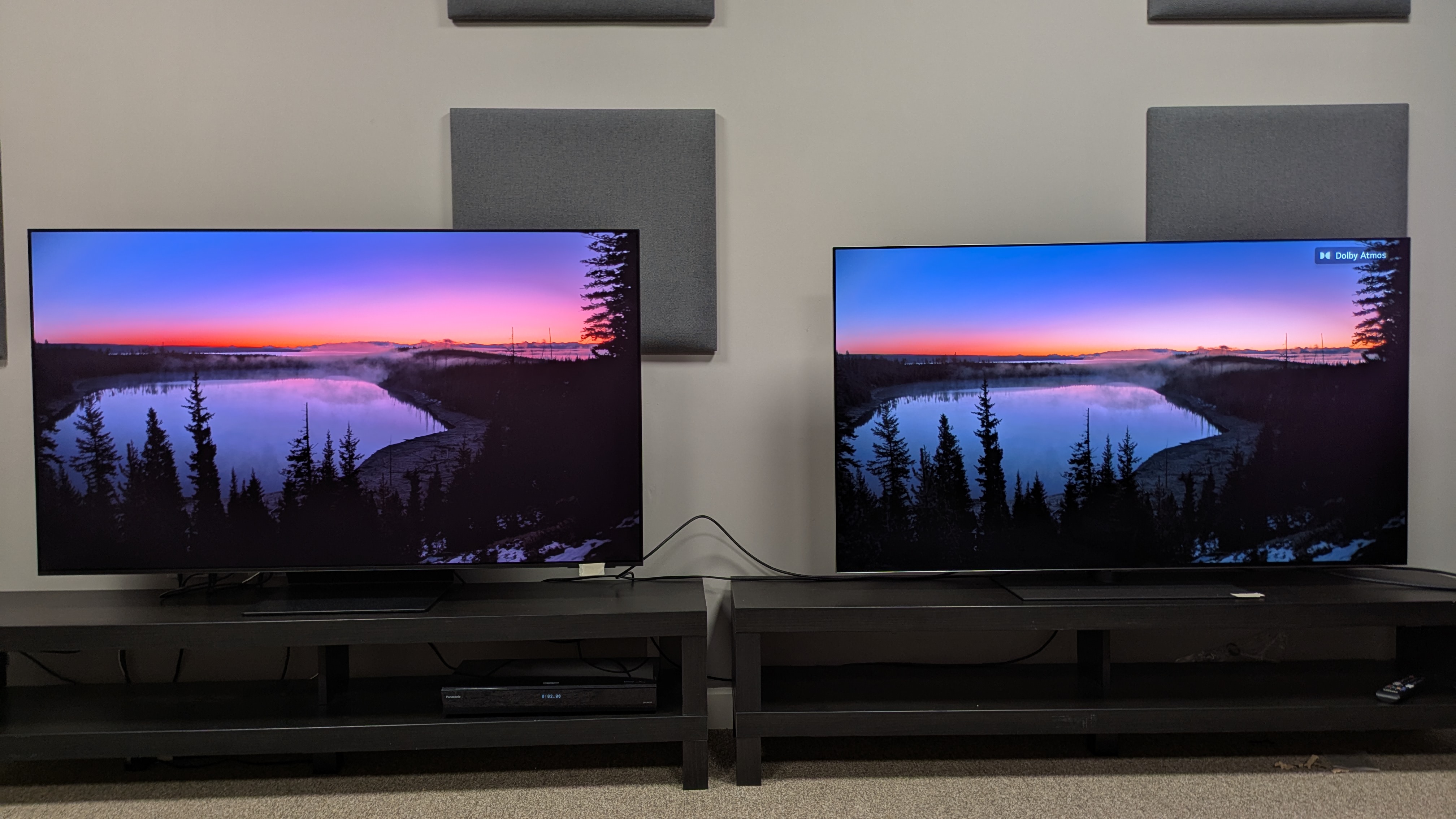
The LG G5 launched in April 2025, one month earlier than the Samsung S95F which launched in May 2025.
Despite this gap, both TVs launched at near-identical prices across every size. For the 65-inch models, the LG G5 cost $3,399 / £3,299 / AU$5,299 at launch and the Samsung S95F cost $3,399 / £3,399 / AU$5,295.
Several months on from the two TVs launches and both brands have been aggressively discounting their TVs. The 65-inch LG G5 is now available for $2,799 / £2,899 / AU$4,699, while the Samsung S95F 65-inch is available for $3,299 / £2,899 /AU$5,295. LG is the better value in the US and Australia right now, but in the UK it's a much tighter call. Expect this to be the case over the next 12 months.
Samsung S95F vs LG G5: specs
| Header Cell - Column 0 | Samsung S95F | LG G5 |
|---|---|---|
Price (65-inch) | $3,399 / £3,399 / AU$5,295 | $3,399 / £3,299 / AU$5,299 |
Sizes | 55, 65, 77, 83 inches | 48, 55, 65, 77, 83, 97 inches |
Panel type | QD-OLED (55-77 inches); Primary Tandem RGB OLED (83 inches) | Primary Tandem RGB OLED (48-83 inches); W-OLED (97 inches) |
Refresh rate | 165Hz | 165Hz |
HDR support | HDR10+/HDR10/HLG | Dolby Vision/HDR10/HLG |
Smart TV | Tizen | webOS |
HDMI Ports | 4 x HDMI 2.1 | 4 x HDMI 2.1 |
Samsung S95F vs LG G5: benchmark results
Samsung S95F vs LG G5: Picture quality
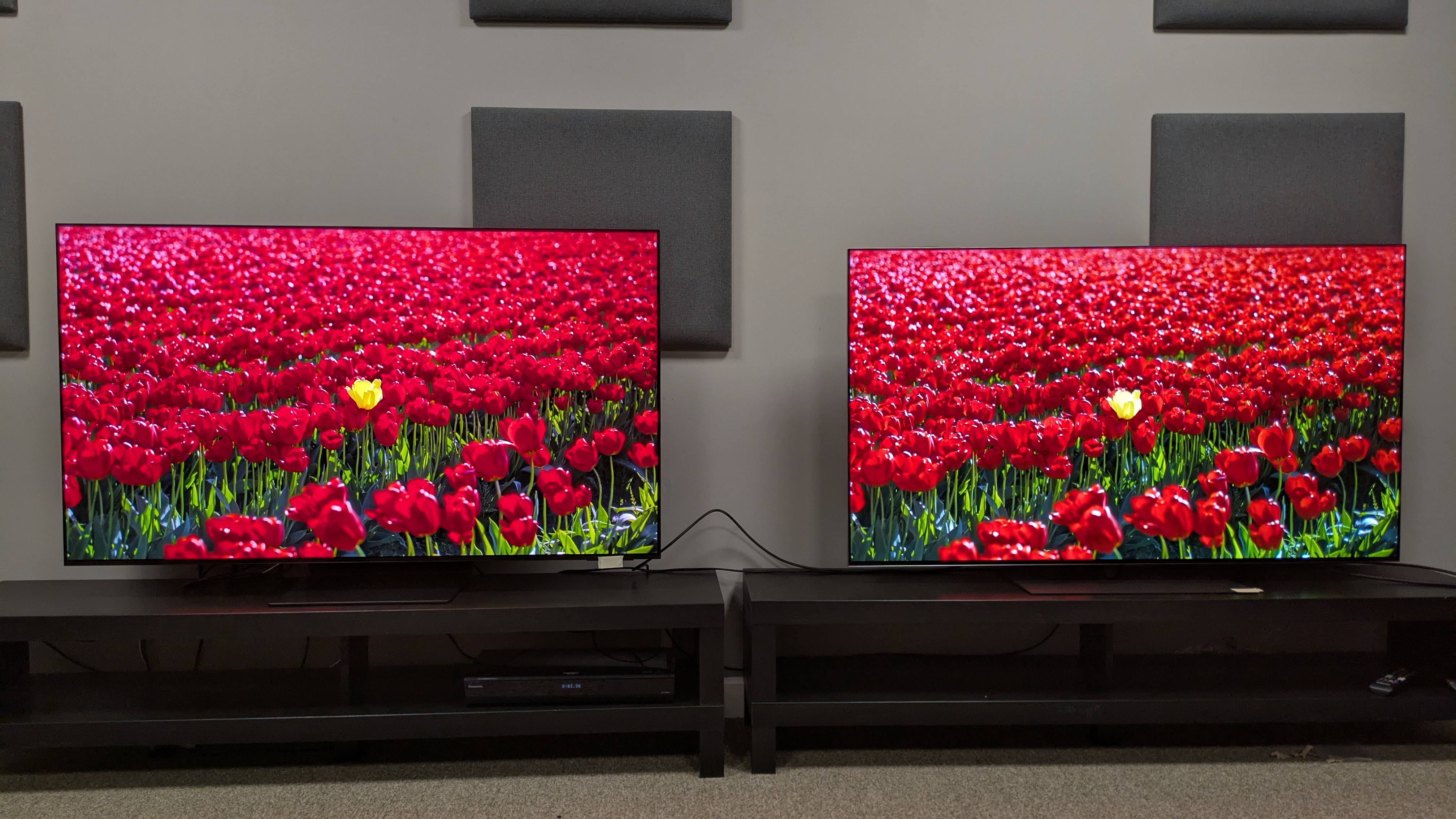
Both the Samsung S95F and LG G5 have phenomenal picture quality, scoring highly in their respective reviews. Side-by-side, it's a tough call on which TV comes out on top.
Sign up for breaking news, reviews, opinion, top tech deals, and more.
Color reproduction is incredibly impressive on both TVs, but whereas the S95F has bolder, brighter and punchier colors, I'd argue that the G5's are richer with more depth. Movies such as Elemental or Wicked that are packed with color thrive on both these excellent TVs, though.
It's no surprise either. Measuring both TVs' HDR color gamut, the S95F hit 100% while the G5 hit 99.6% (using the DCI-P3 color space) so you'd expect colors look to good on these flagship OLEDs.
Getting to some brightness measurements, even these are closely fought. The G5 has the edge with peak highlight HDR brightness, hitting 2,268 nits to the S95F's 2,132 nits (both in Filmmaker Mode, in a 10% window).
For fullscreen HDR brightness, the S95F takes the win with 390 nits compared to the G5's 331 nits (again in Filmmaker Mode), giving it the edge for anything with brightness across the whole screen, such as sports – but these are both good results for an OLED TV.

Both sets deliver rich contrast and inky deep black levels, perfect for dark movies like The Batman or Nosferatu. But the G5 has the edge, in my opinion. The S95F's OLED Glare Free 2.0 screen is perfect for viewing in bright rooms because it removes mirrored reflections, but its black levels are marginally raised when viewed in light conditions, reducing some of the detail in the darkest areas – this means the G5 is best for darker movies.
But if you are in need of an OLED to watch in a really bright room, it's the S95F all the way. Its Glare Free screen eliminates mirror-like reflections for a distraction-free experience, something that can't be said for the G5. The latter does an OK job at tackling reflections, but there are still some present in brighter conditions.
Textures and details are realistic on both sets and motion is smooth with razor-sharp performance for movies and sport, so you're covered there regardless of what TV you buy.
Putting these two TVs side-by-side, it's a tough choice but for me, it's the G5 – just. The S95F delivers outstanding, five-star picture quality, but I found my eye drawn to the G5 so it just gets the picture quality victory here.
Samsung S95F vs LG G5: sound quality
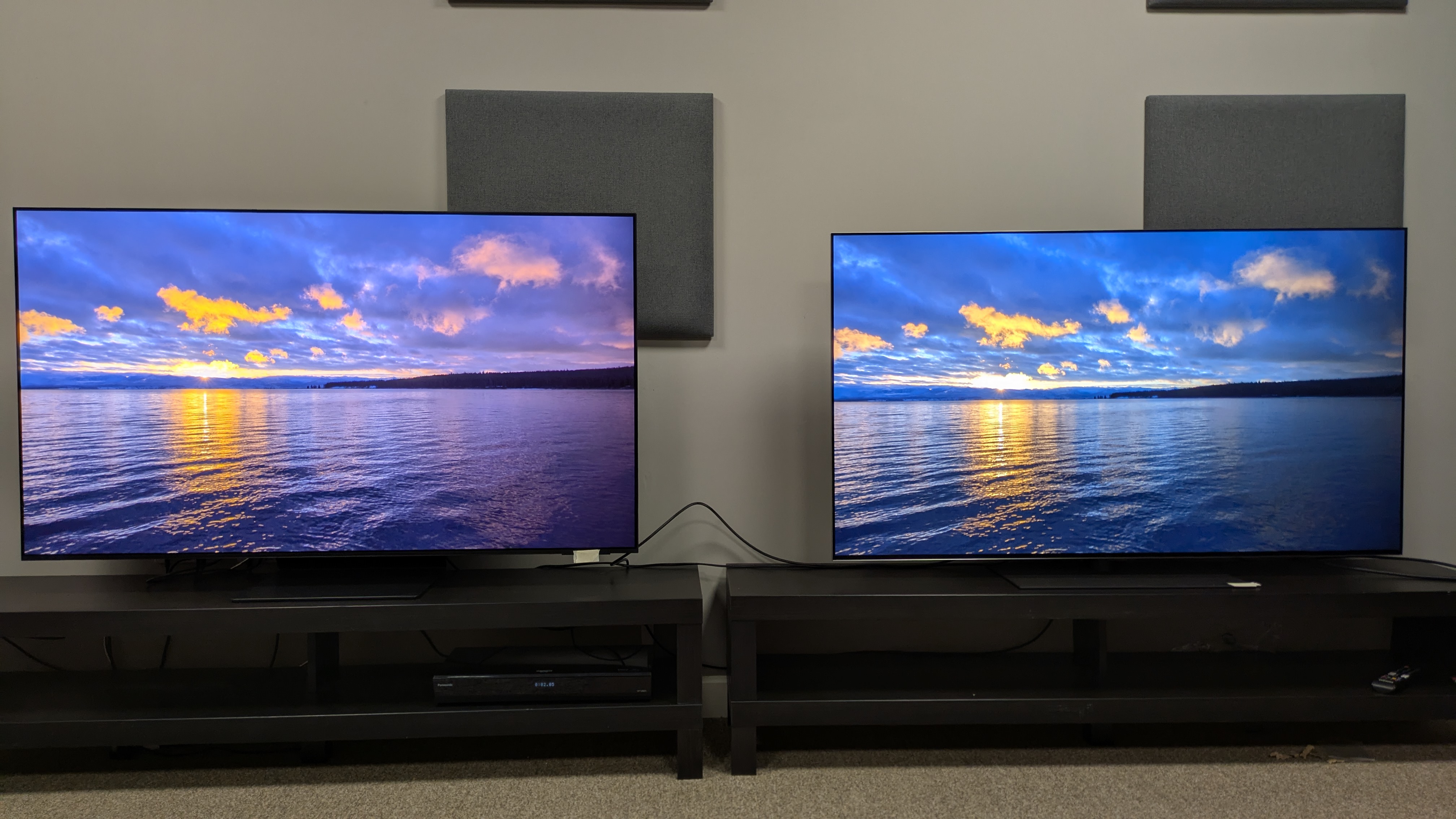
It's no secret that sound quality isn't the best on a lot of TVs, meaning you often have to invest in one of the best soundbars. Thankfully, the S95F and LG G5 deliver pretty strong sound quality that's good for daily viewing at the least, and some may even find it satisfactory enough for immersive movie viewing too.
The S95F delivers clear, punchy and accurately positioned sound that suits chaotic scenes such as the Batmobile chase from The Batman, with swerving traffic and crunching collisions. Where I found the S95F to be a bit lacking was its bass control. The power was still there, but it sometimes got carried away and didn't feel controlled.
I also felt its overall soundstage was narrow, never creating a truly expansive sound despite its 4.2.2-channel, 70W speaker array.
The G5 carries a 4.2 channel speaker system that delivers punchy bass and a wider-feeling soundstage than the S95F. It also has good clarity and good spatial positioning, though not quite as effective as the S95F's.
But, in a real surprise to an AI-sceptic like me, it's the AI Sound mode that impresses most, delivering an upmixed 11.1.2-channel sound that adds even more width and detail to the sound, although bass does take a hit. It's still probably the G5's most effective sound mode, however.
Between the two TVs' built-in speakers, there's really not much in it. Both are better than your average but don't quite live up to astonishing picture quality. One of the best Dolby Atmos soundbars is recommended, but if I had to pick a winner it would be the G5 once again.
Samsung S95F vs LG G5: Features, smart TV & gaming
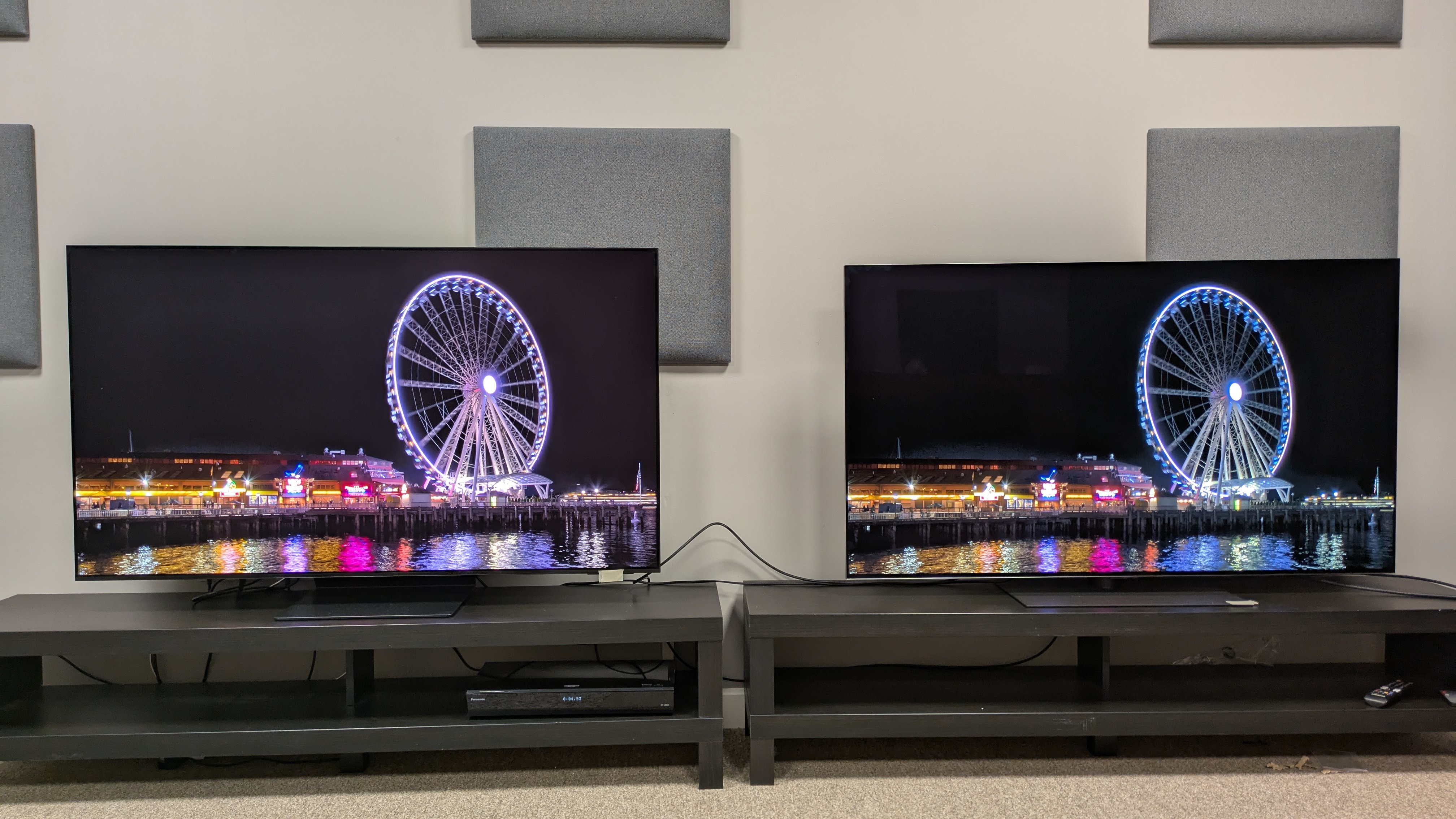
As flagship OLEDs, both the S95F and G5 are filled to the brim with both smart and gaming features, including AI-based picture and sound tools.
Both TVs have new OLED panels that give them the edge over traditional W-OLED panels, with the G5's Primary RGB Tandem OLED panel, and the S95F's QD-OLED panel (except at 83 inches, where it uses the same panel as the G5) adding more brightness, color depth and contrast than ever before.
The S95F's most unique feature is its OLED Glare Free 2.0 screen which negates distracting mirror-like reflections and reduces lights to a haze. The G5 uses technology to maintain black levels in bright rooms and while effective, it doesn't solve the reflection issue.
Both TVs offer HDR10 support, but the S95F offers HDR10+ while the G5 offers Dolby Vision, with neither set offering the other. Of the two, Dolby Vision is currently the most commonly used with 4K Blu-ray and streaming.
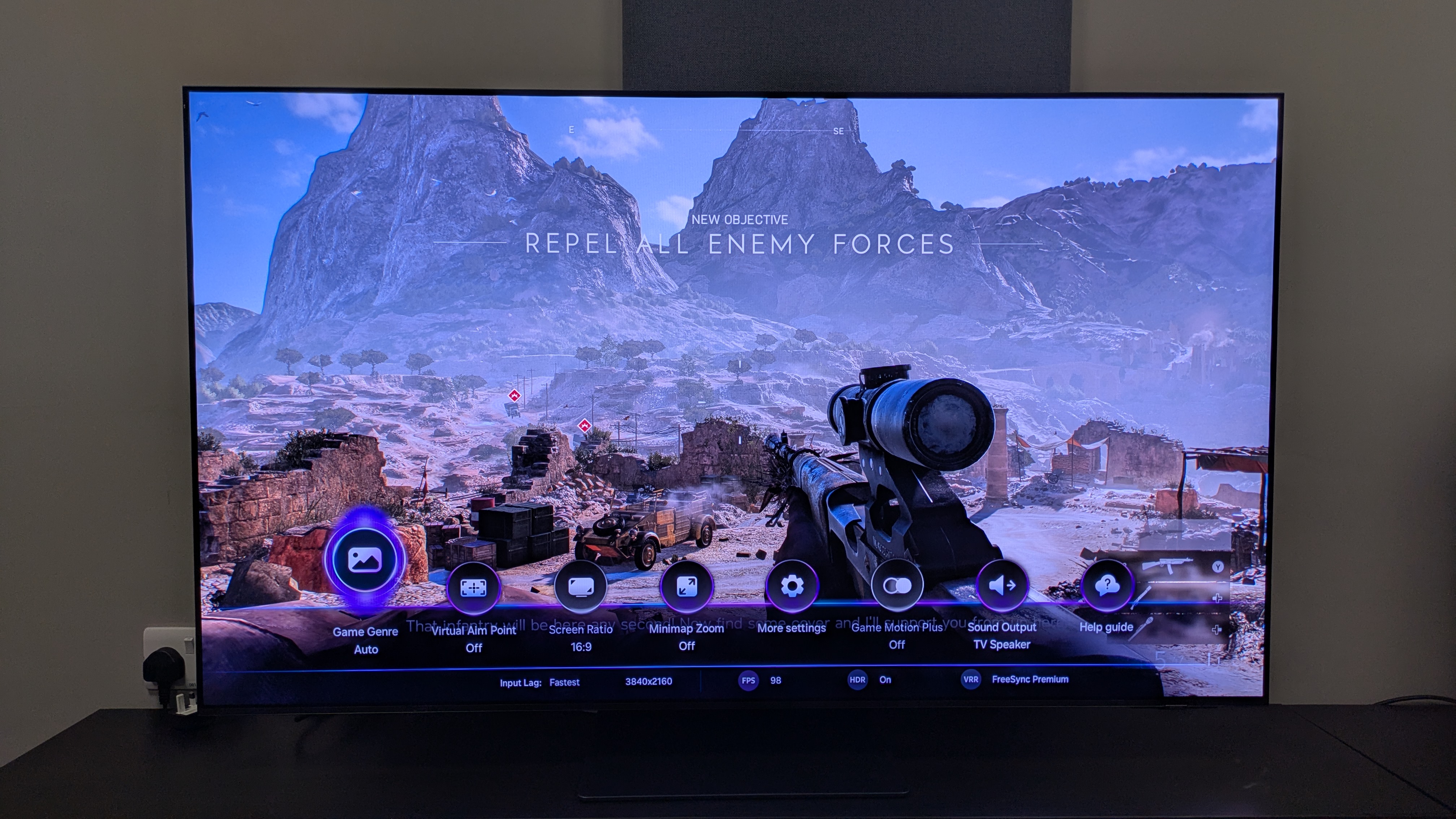

Gaming is where these two TVs shine. Both sets come with four HDMI 2.1 ports that support 4K, 165Hz, FreeSync Premium Pro, Nvidia G-Sync (a first for the S95F), HGiG and ALLM. The S95F offers HDR10+ gaming while the G5 offers Dolby Vision gaming.
Both even have their own unique game modes. The G5's Game Optimizer features customizable settings for picture and performance, while the S95F's Game Hub is a portal for cloud-based apps and all things gaming, and we love this here at TechRadar for its convenience.
Gaming performance is razor-quick, snappy and ultra-responsive on both the S95F and G5, hitting 9.5ms and 9.2ms (with boost mode activated in the Game Optimizer) respectively: both ultra-low figures that gamers will be delighted with.
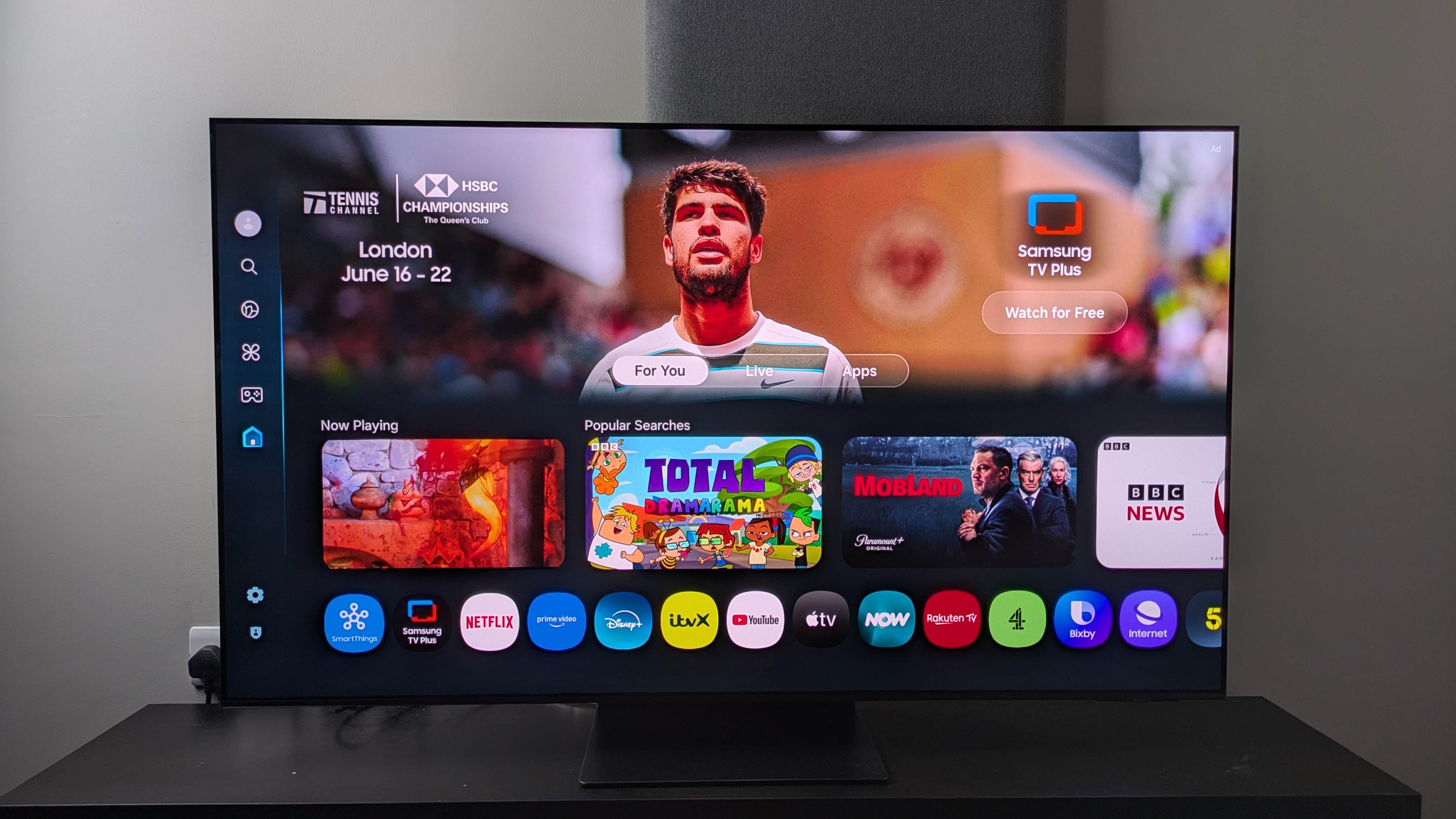
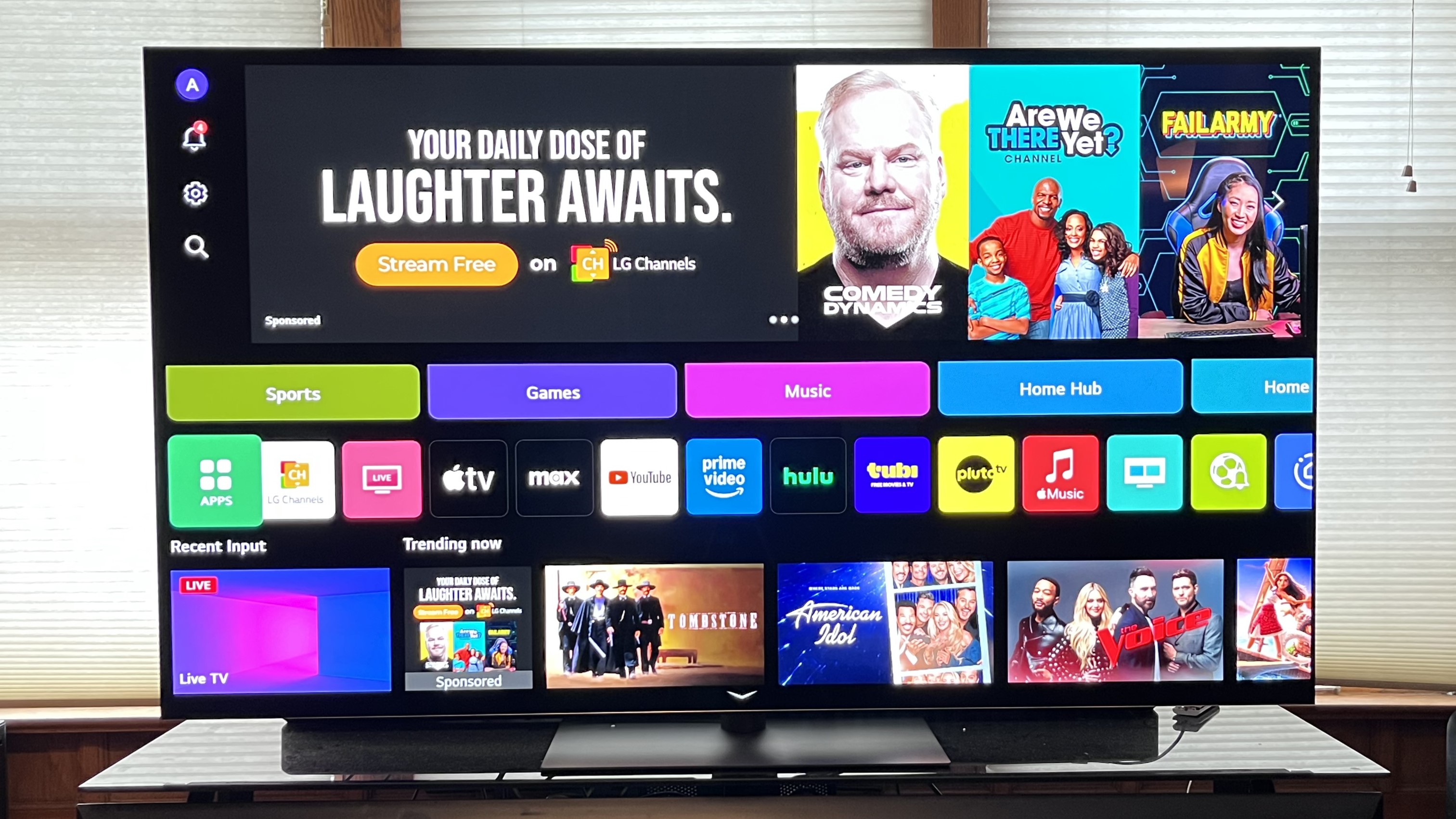
When it comes to smart TV software, LG's webOS has been the clear favorite here at TechRadar for a number of years now, thanks to its easy-to-navigate menus, including a very useful quick menu, smooth performance and simple layout.
A number of new AI tools in webOS 25, such as AI Search and AI Concierge make searching for and being recommended optimized content easier than ever.
But, this year, Samsung has fired back. Tizen 9.0 is easily the most complete version of Samsung's Tizen software I've ever used. More responsive, a quick menu to rival LG's and a hub layout with a customizable home screen mean that LG isn't such a clear-cut winner anymore. Some settings are buried in menus annoyingly, but this is really the only gripe I have with Tizen 9.0.
In terms of features, both the S95F and G5 provide everything you could ever need. The G5 earns points for Dolby Vision support and I do still prefer webOS, but the S95F's anti-glare screen really is a game-changer for bright daytime viewing. I can't actually call a winner here, since both are just that good.
Samsung S95F vs LG G5: Verdict
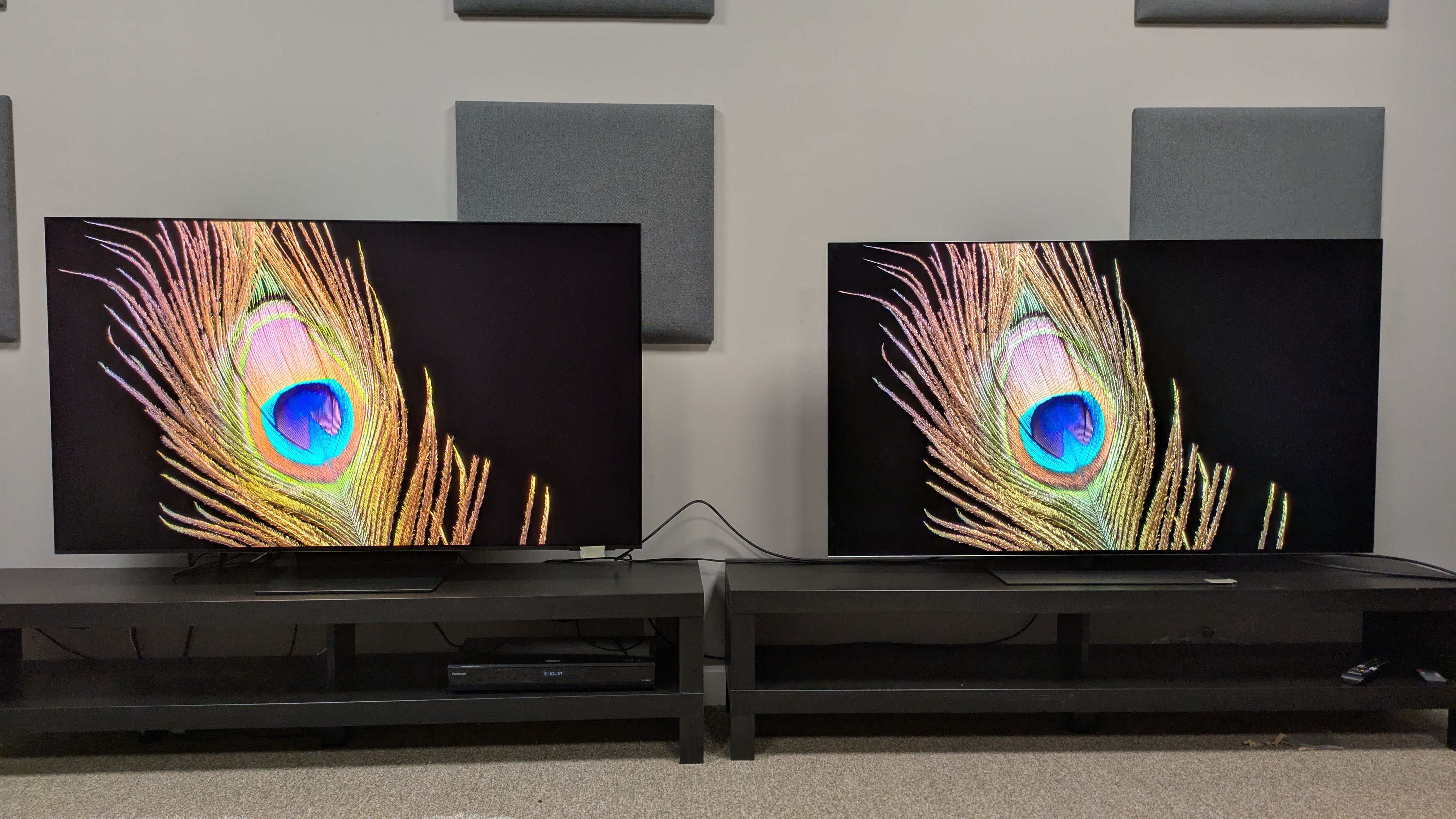
Both the Samsung S95F and LG G5 are incredible TVs. A culmination of years of OLED innovation that means we're now getting the best picture quality, highest brightness and most complete feature sets to date. But which one takes the win?
It really is a tough call, but for me personally, the LG G5 takes the win by the slightest of margins. I found during testing that I preferred the G5's color profile, contrast and black levels. Plus, it has Dolby Vision support and I still think webOS just edges out Tizen.
The S95F still offers an effective anti-reflection screen, gorgeous visuals and a full feature set, meaning it's still an incredible TV that will be the best fit for people in certain conditions in particular – particularly bright rooms.
The G5 65-inch is currently $400 cheaper in the US, but I expect these two to trade the title for lowest-priced flagship OLED throughout the year. Realistically, you won't be disappointed with either TV and it may come down to which has the best deal where you are, but the winner for me right now is the LG G5.
Today's best Samsung S95F and LG G5 deals
You may also like

James is the TV Hardware Staff Writer at TechRadar. Before joining the team, he worked at a major UK based AV retailer selling TV and audio equipment, where he was either telling customers the difference between OLED and QLED or being wowed by watching a PS5 run on the LG 65G2. When not writing about the latest TV tech, James can be found gaming, reading, watching rugby or coming up with another idea for a novel.
You must confirm your public display name before commenting
Please logout and then login again, you will then be prompted to enter your display name.